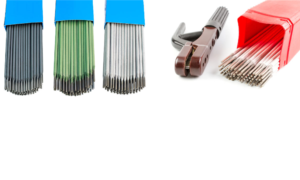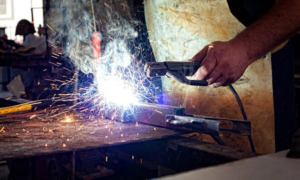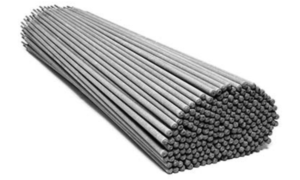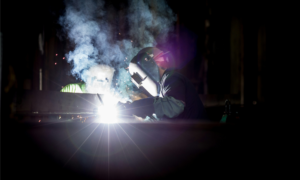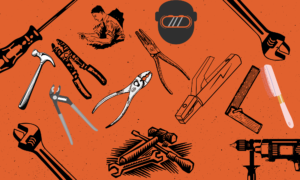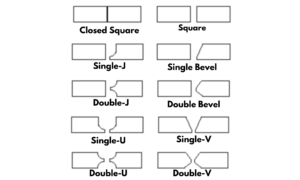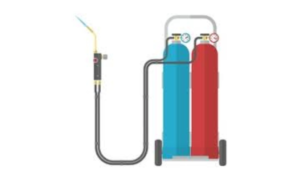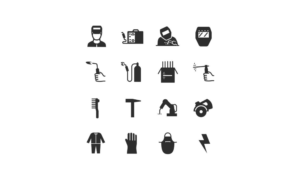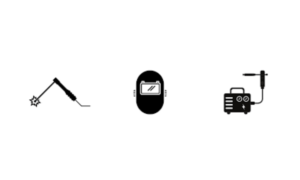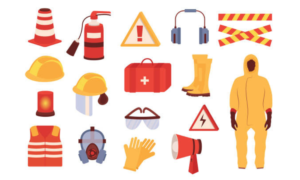Different types of welding positions include flat, horizontal, vertical, and overhead. Each position is designed for optimal welding of joints in various orientations.
Welding is a fundamental technique for joining metals, pivotal in industries from construction to automotive manufacturing. Mastery of the four basic welding positions is crucial for welders aiming to achieve strong, reliable joints in a multitude of scenarios. Flat welding, also known as the 1G position, is often used for its ease and efficiency, allowing welders to work on the top side of a joint.
Horizontal welding, or 2G, challenges welders to work with gravity on fillet or groove welds on vertical surfaces. Vertical welding, the 3G position, demands skill as the welder joins metals from top to bottom or bottom to top on a vertical plane. Overhead welding, recognized as the most difficult at 4G or 4F, requires welders to operate against gravity from beneath the joint. This understanding is essential for professionals seeking precision and strength in their welding projects, ensuring that they can adapt to various requirements with proficiency.
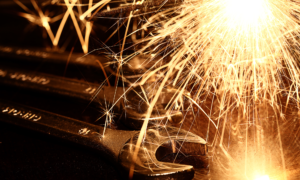
Welding Positions Explained
Flat Position Basics
The flat position, also known as the 1G or 1F, is the most common and basic welding position. It’s similar to laying a bead on a tabletop.- Welding is performed on the top surface of the base metal.
- The welder operates in a horizontal direction.
- Gravity helps the molten metal stay in place, making it ideal for beginners.
Vertical And Challenging Overhead Techniques
As welders advance, they encounter the vertical (3G and 3F) and overhead positions (4G and 4F). These require more skill due to the force of gravity and the direction of the weld. Here are the basics:Vertical Welding:
- Weld lines run up and down.
- Controlled speed and heat input are crucial.
- Used commonly in the construction of steel structures.
Overhead Welding:
- Welding is performed from beneath the joint.
- It is the most complex due to the risk of molten metal.
- Requires consistent motion and great precision.
Flat-position welding
Preferred For Beginners
Entering the welding trade? Start with the flat position. It’s the easiest method to learn because of its stability and accessibility.- Comfortable posture
- A clear view of the welding area
- Easy manipulation of the electrode
- Reduced difficulty in handling filler materials
Tips For Improving Flat Weld Quality
Every welder aims for high-quality and durable joins. These tips will help refine your flat welds:- Ensure a clean work surface to avoid contamination.
- Choose the right electrode for the job.
- Maintain a consistent speed and angle.
- Monitor heat input to prevent warping.
Horizontal Welding Nuances
Overcoming Gravity
Welding horizontally means battling gravity head-on. The force that keeps us grounded also pulls the weld downward during the process. This can lead to sagging or dripping, also known as slumping. To combat this, welders must adjust their technique, ensuring complete fusion while preventing weld defects.- Use a tighter arc, which gives more control over the molten weld pool.
- Decrease voltage and amperage to minimize the liquidity of the weld pool.
- Adjust travel speed; a faster speed can reduce the chance of slumping.
Controlling The Weld Pool
Control is vital when it comes to the weld pool in horizontal welding. The pool’s shape and heat influence the final weld’s quality. Here, skillful manipulation of welding rods and wire feed speed helps maintain a consistent weld pool, resulting in a stronger and cleaner weld.| Tips for Pool Control | Benefits |
|---|---|
| Utilize a weaving technique | It spreads the weld evenly and fights gravity |
| Keep the electrode at a 90-degree angle | Reduces pool fluidity and adds precision |
| Employ a side-to-side motion | It helps distribute heat and prevents pool from sagging |
Mastering Vertical Welding
Uphill Vs. Downhill Challenges
Vertical welding positions come in two main forms: uphill or downhill. Each presents distinct obstacles.- Uphill welding involves moving the torch upward. It’s ideal for creating strong welds due to its deep penetration. But it can be slow and difficult to control.
- Downhill welding is the opposite, moving the torch downward. This method is faster and easier, but it can lead to weaker welds with less penetration.
Techniques For Strong Vertical Welds
To achieve strong vertical welds, consider these crucial techniques:- Control travel speed to maintain a consistent arc.
- Use the right electrode angle to optimize penetration.
- Practice stringer beads and steady hand movements.
- Select the appropriate electrode type for the job.
Overcoming Overhead Welding
Safety First
Never compromise on safety. Overhead welding means hot metal can fall. Protect yourself adequately. Use auto-darkening helmets, flame-resistant clothing, gloves, and boots. Ensure all safety gear is intact and properly worn before starting.- Helmet: Must have appropriate shading for protection.
- Leather gloves are durable and heat-resistant.
- Apron or Jacket: Flame-resistant to shield from sparks.
- Boots: high-top leather to prevent falling metal injuries.
Pacing And Positioning
A steady pace ensures consistency. Position your body to minimize stress.| Aspect | Guideline |
|---|---|
| Body Alignment | Stand so you can move without strain. |
| Welding Gun Angle | Keep it perpendicular to the workpiece. |
| Speed | Maintain an even, controlled speed. |
| Breaks | Take frequent breaks to avoid fatigue. |
Advanced Welding Positions
Pipe Welding Positions
Pipe welding demands precision and versatility. Different positions address various angles and access limitations.- 1G: horizontal roll position
- 2G: vertical position; pipe is stationary
- 5G: Horizontal position; pipe is fixed
- 6G: Inclined fixed position, most challenging
Complex Assemblies And Configurations
In complex assemblies, welders confront irregular shapes and sizes. Varied materials join at uncommon angles.| Configuration Type | Characteristics | Examples |
|---|---|---|
| T-Joints | The perpendicular joining of two plates | Frames, structures |
| Corner Joints | Two plates at a 90-degree angle | Box, enclosure |
| Lap Joints | Plates overlap and are welded at the edges | Sheet metal work |
| Edge Joints | Parallel plates joined at the edge | Sheet metal alignment |
Choosing The Right Welding Position
Assessing The Job Requirements
Understanding the task at hand is key. It sets the stage for a successful weld. Here’s what matters:- Location of the weld: Is it accessible?
- The direction of the weld: horizontal, vertical, or overhead?
- Dimensions of the weld: length, depth, and design specifications.
Adapting To Material And Weld Type
Materials and weld types dictate the position.| Material Type | Weld Type | Suggested Position |
|---|---|---|
| Thin sheets | Butt weld | Flat |
| Thick plates | Fillet weld | Vertical |
| Pipes | Seam weld | Horizontal |
Training And Certification
Path To Professionalism
The journey to becoming a certified professional welder starts with a solid foundation in welding techniques. Candidates learn through vocational schools, community colleges, or apprenticeship programs. Practical skills develop with time and practice. Key stages include:- Understanding welding fundamentals
- Learning safety procedures
- Gaining experience in different welding positions
- Perfecting technique under the guidance of a mentor
Certifications And Specializations
Certifications validate a welder’s capabilities. They are essential for employment. They show a welder can perform to industry standards. Welders can specialize in specific types of welding, such as MIG, TIG, or stick. Common certifications include the following:| Certification | Description | Welding Type |
|---|---|---|
| Certified Welder (CW) | Baseline qualification for welders | General |
| Certified Welding Inspector (CWI) | Inspects welding work for quality | General/All Types |
| Specialized process certifications | Covers specific welding processes | MIG, TIG, etc. |
Common Challenges And Solutions
Dealing With Distortion
Distortion is a welder’s bane. It can cause parts to warp, affecting the final product. Good practices can minimize this issue.- Plan weld sequence: Use a proper welding sequence to balance the heat distribution.
- Preheat the metal. This evens out the temperature and reduces shrinkage.
- Interpass temperature control: Maintain consistent temperatures between weld passes.
Preventing Defects And Weak Joints
Weak joints and defects can compromise a structure’s integrity. Perfecting the welding technique is crucial for a strong bond.- Select the correct filler material. It should match the metals being welded.
- Proper cleaning: Remove all contaminants from the welding surface.
- Correct welding speed and angle: This ensures even heat distribution and proper penetration.
Futuristic Welding Techniques
Automation In Welding
Robots have entered the welding arena, offering precision and efficiency. The latest robots deliver consistent welds for hours without fatigue. Automated systems adapt to various welding positions, outperforming manual welders in speed and accuracy.- Robotic arms: They can move in multiple directions, making complex welds a breeze.
- Automated guided vehicles (AGVs): AGVs carry automated welders to work on large structures with ease.
- Sensory feedback systems: These keep the robotic welders informed about the weld quality in real time.
Emerging Technologies And Materials
Innovative materials and technologies push welding into a new age. Welders now work with advanced composites that are stronger and lighter. They also use new welding processes developed for these futuristic materials.| Technology | Material | Benefit |
|---|---|---|
| Laser Welding | Carbon Fiber Reinforced Plastic | Stronger, precision bonds |
| Ultrasonic Welding | High-Strength Alloys | Low-temperature process |
| Friction Stir Welding | Polymer-Based Composites | Seamless joins |
Frequently Asked Questions Of Different Types Of Welding Positions
What Are the 4 Types of Welding Positions?
The four types of welding positions are flat position (1G/1F), horizontal position (2G/2F), vertical position (3G/3F), and overhead position (4G/4F).
What is the 5g welding position?
The 5G welding position refers to a pipe welding position where the pipe is horizontal and rotates as the welder welds in a fixed position.
What Are the Four Main Types of Welding?
The four main types of welding are MIG (Metal Inert Gas), TIG (Tungsten Inert Gas), Stick (Shielded Metal Arc Welding), and Flux-Cored Arc Welding. Each method serves different applications and skill levels.
What Is the Hardest Position to Weld in?
The overhead position is considered the hardest to weld due to gravity challenging the welder’s skill in manipulating the weld pool.
Conclusion
Understanding welding positions is crucial for quality and safety in metalwork. This guide explored common angles and techniques essential for aspiring welders and seasoned professionals alike. Enhance your skills by practicing each position, ensuring strong, durable welds for any project that comes your way.
Remember, practice makes perfect in mastering these varied welding challenges.
Read More:



